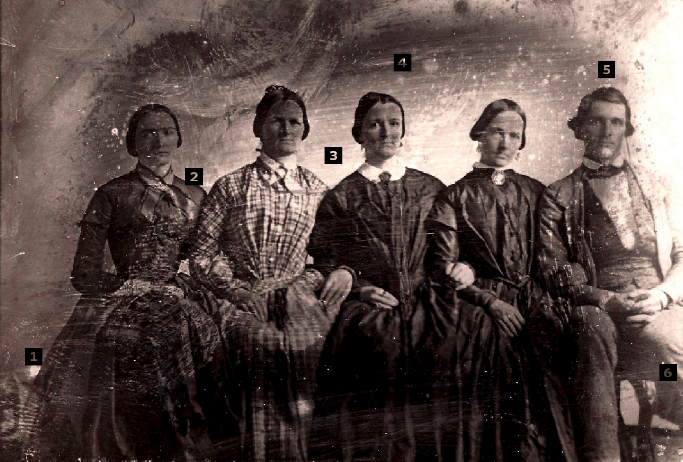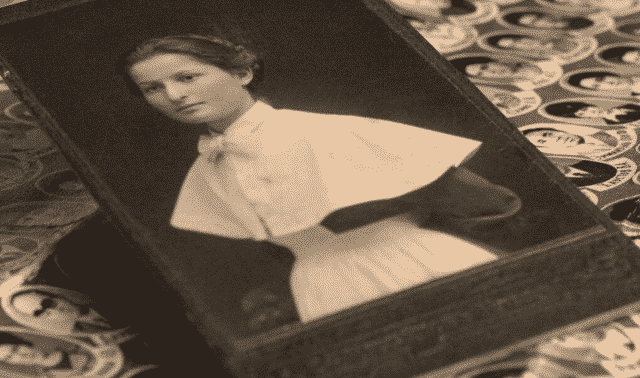This image could show a family branch Judy Norman knows little about. But the details she had didn’t add up. Inside the case of this daguerreotype was a note from her grandmother: “Taken 111 years ago. This is 1967, Grandma Humbarger. In center, Martha Jane Humbarger, Ficklin, Illinois.”
Simple math says the picture was taken in 1856. But Martha Jane (Jacobs) Humbarger wasn’t born until 1855. And in 1856, these folks lived in Vermillion County, Ind., not Ficklin, Ill. Let’s see if we can help Norman figure out what’s right and what isn’t.
A daguerreotype is a silver-coated copper plate that’s been sensitized with chemicals, creating a reverse photographic image. A glass cover protects the fragile image inside a case. The polished silver creates a mirror; you must hold a daguerreotype at an angle to view it. The images were popular in the 1840s for portraits. By 1860, new technology had largely replaced this expensive process.
Women’s magazines such as Godey’s Lady’s Book spread fashion trends across the country during the 1800s. You can see a range of styles from the era in My Likeness Taken: Daguerreian Portraits in America by Joan Severa (Kent State University Press). By 1856, young women were adopting wide lace collars and different-style bodices and hairstyles than what you see here, so perhaps Grandma’s date is off by a few years.
But maybe she wasn’t completely wrong: Martha Humbarger’s mother, Sarah (Smith) Jacobs, could be in this photo with siblings or in-laws. Born in 1829, she’d be in her early 20s when the picture was taken. Norman is having trouble finding the Smiths because of their common surname. Perhaps this photo will help her solve the puzzle.

1. You can see polish marks in the background and a fingerprint (probably the photographer’s) on this woman’s dress. The original image is tarnished around the edges; Norman enhanced this scan using photo-editing software.
2. Norman’s photo shows three different types of collars—ribbon-trimmed, small and round, and stand-up. This young woman wears fashionable mid-19th-century attire: ribbons crossed around the neckline, a tight-fitting bodice and little capped sleeves.
3. These ladies’ hairstyles, looped over the ears with decorative combs and buns in back, were common from about 1848 to the early 1850s.
4. The three women seated in the center sport less-current dresses with loose-fitting waists.
5. Men of all ages wore silk ties wrapped under the collar, vests and loose-fitting jackets during the mid-19th century. This young man removed his hat for the picture, but his hat hair remains.
6. It’s unusual to see a group portrait in a daguerreotype, so the image may commemorate a special occasion, such as a wedding.
From the July 2010 Family Tree Magazine



